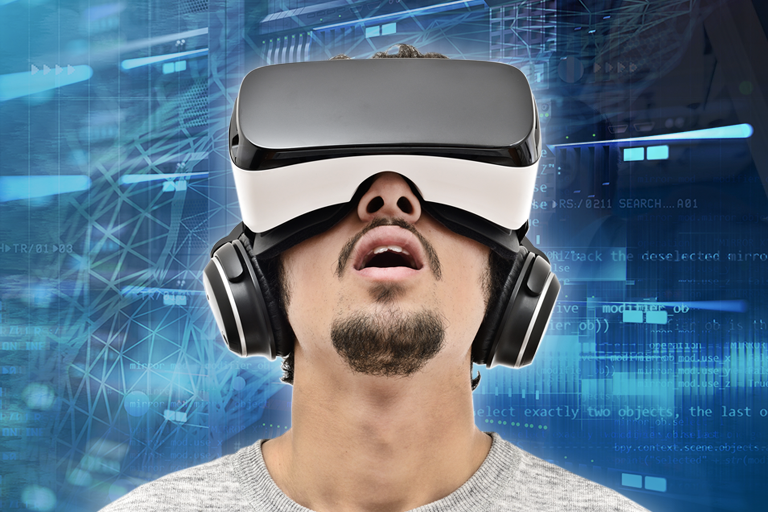
With e-commerce giants like Amazon and Alibaba top of mind for today’s consumers, it seems that online retail is getting all the hype. However, to say that digital commerce is taking over all of retail isn’t completely true. Brick-and-mortar sales aren’t fading anytime soon—it’s projected that 83% of goods purchased globally in 2022 will still be bought in store. As brick-and-mortar stores are making a comeback with millennials and Generation Z, updating in-store technology is the optimal way to improve the real-world shopping experience.
Today’s retailers are quickly realizing the many benefits offered by emerging technologies, and are using them to design new in-store strategies to appeal to the modern consumer. These new strategies are reshaping our retail stores and empowering the consumer to make fast and well-informed purchasing decisions while also providing in-store discovery opportunities and a new focus on the impulse side of retail.
Here are five technologies to implement into your in-store retail business.
1) Mobile POS
Mobile point-of-sale (POS) systems have been around for quite some time, but growth and adaptation to the changing retail environment are expected to continue. Mobile POS improves customer experience on the checkout line by reducing time spent waiting. Sales associates can begin to process transactions while customers are waiting in line, allowing for a convenient, speedy check-out.
With research by Capital One showing that 34% of millennials “rarely or never” carry cash, mobile POS caters to the preferences of today’s consumers, while also streamlining in-store operations. Bringing mobile POS to your retail location is a simple, yet impactful way to adapt to trending retail technology. Not only does a mobile system create an improved customer experience, but also can be added anywhere in store. Gone are the days of bulky registers; mobile POS systems are an easy addition to your retail location.
2) Cloud-Based ERP
With consumer preferences and buying habits constantly evolving and changing, the modern retail strategy requires more data, analysis, and a better understanding of customer behavior in order to be successful. For example, effectively managing your inventory is a critical function for all retail businesses. It not only affects what shoppers see in the stores, but it also makes a difference when it’s time to report earnings. Too much inventory results in higher markdown costs, as well as extra advertising and selling expenses to eliminate the surplus—which all takes a toll on your gross margin.
However, using a cloud-based enterprise resource planning (ERP) system to record your inventory means you can simultaneously compare your inventory information with financial data, purchase orders, billing schedules, and other valuable analytics. This way, updated and accurate data is constantly at your fingertips, allowing you to make data-driven decisions, at all stages of the buying, managing, and selling process.
3) Augmented Reality
As both virtual and real worlds can harmoniously coexist, augmented reality (AR) can offer virtual information as a tool to provide assistance in everyday activities. Brick-and-mortar retailers have begun to use AR to establish an interactive customer experience. It’s a smart move, considering that over 60% of consumers prefer stores that offer AR experiences. AR has also been shown to drive impulse purchases, with 72% of consumers stating that they’ve purchased goods they didn’t plan to buy because of AR.
In today’s retail environment, AR can help shoppers easily envision an item they are considering buying, whether it be a couch for their living room or a new pair of sunglasses. Customers spend more time in stores that incorporate AR into their shopping experience and increase their interaction time with a given product. Lengthening time spent connecting with a product encourages a more meaningful customer experience, where consumers can imagine the item in their daily reality.
4) Mobile Clienteling
Store associates equipped with mobile clienteling tools can input customer information as well as access their profile and purchase history. This knowledge allows them to tailor their recommendations. They can also continue the conversation by reaching out to customers after they’ve left the store, by e-mail, text message, live chat, or social media messaging. Customers benefit from an enhanced, omnichannel shopping experience and associates benefit by receiving credit for sales that occur outside of the store.
Associates have never been better equipped to provide personalized service across all channels, and customers finally have a way to connect with a local, in-store associate when they want, how they want.
5) Smart Mirrors
Smart mirrors were once just a gadget in science fiction movies, but they have now become a reality. For apparel and other fashion retailers, interactive smart mirrors are about as cutting edge as you can be. Products are connected through RFID tags that sync to the store’s inventory, and allow customers to select new styles or sizes in the fitting rooms. Smart mirrors and interactive fitting rooms create a personalized customer experience, while allowing retailers to collect customer data that is usually restricted to e-commerce business.
Retailers who have integrated this technology have experienced significant results. MemoMi memory mirrors, found in 34 Neiman Marcus locations, have made a more pleasant experience when shopping for cosmetics, sunglasses, and even sneakers. With a convenient-yet-luxurious feel, smart mirrors are sure to improve your purchase conversion rates.
The addition of technology to in-store retail enables you and your business to best connect with customers, while providing an optimal customer experience. Incorporating retail technology into stores can bridge the gap between brick-and-mortar and e-commerce sales, proving to not only be effective in the retail marketplace, but also create a truly immersive shopping experience for all.


